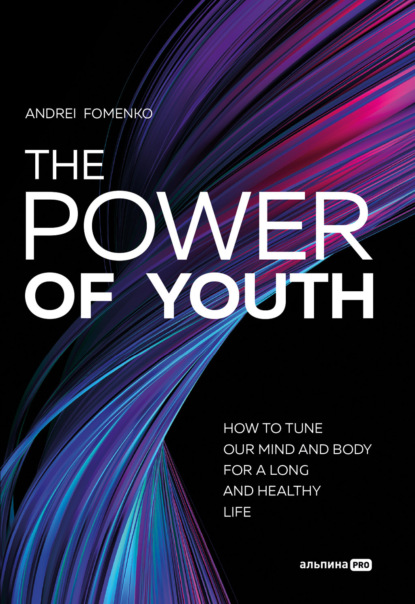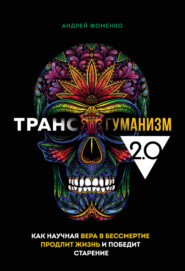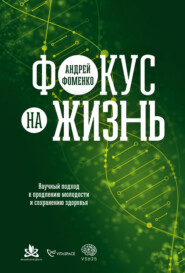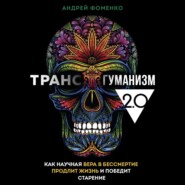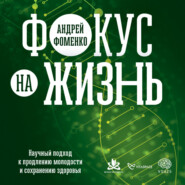По всем вопросам обращайтесь на: info@litportal.ru
(©) 2003-2024.
✖
The Power Of Youth. How To Tune Our Mind And Body For A Long And Healthy Life
Настройки чтения
Размер шрифта
Высота строк
Поля
AGING AND YOUTH
THE DREAM OF A LONG LIFE IS MEANINGLESS WITHOUT RESOLVING THE AGING PROBLEM – MEMORY IMPAIRMENT (OR COMPLETE MEMORY LOSS), WORSENING FRAILTY, NEED FOR CONTINUOUS CARE, A BUNCH OF AGE-RELATED DISEASES, HUGE NUMBER OF MEDICATIONS TO SUPPORT A FADING BODY, ETC.
Such prospects do not please anybody. At the same time, we can look at aging from essentially different points of view. You can resign yourself, and take age-related decline and diseases as an inevitability and part of human destiny. However, there is another point of view. Just look at people who live longer than others having a healthy, strong body, a clear mind, and a zest for life. We might wonder how they do it. To find the answer, it is very important to get onto aging, and scientific views about the nature of this phenomenon. And then to learn about studies revealing mechanisms of preserving youth and increasing longevity.
WHAT BODY CHANGES ARE CAUSED DUE TO AGING?
As a person grows older, their appearance, health, and the function of most organs change. The set of these metamorphoses, which manifest both externally and internally, is called aging. Here are some signs characteristic of aging.
● Hearing impairment: children can hear high-frequency sounds (above 20 Hz) – this ability is usually lost by the end of adolescence. After age 75, more than half of older adults hearing gets worse so much that it prevents normal communication.
● Vision problems: after the age of 35, the tone of the ciliary muscle, responsible for accommodation[3 - Accommodation of the eye is its ability to focus on objects at different distances by changing the refractive properties of the lens. – Ed. note.] (change in the curvature of the lens) decreases. As a result, farsightedness (presbyopia) develops and progresses after the age of 40 – a deterioration in the ability to see near objects. In addition, over the years, the risk of cataracts (clouding of the lens) increases.
● Change in skin tone: due to lower production of hyaluronic acid, collagen, and elastin fibers over the years, the skin loses elasticity, which leads to wrinkles.
● Over the years, the function of cells producing melanin, the substance that determines hair color, suffers, and graying comes with this process. In addition, as we age, our hair begins to fall out more actively, and the risk of alopecia (hair loss) increases.
● As we age, we lose muscle mass and strength, and muscle's ability to regenerate deteriorates.
● After the age of 25, fertility (ability to conceive) in women starts to decline. At the age of 44 to 55 years, (there can be deviations in either direction) menopause occurs, and loss of the ability to childbirth. Men's sexual function also deteriorates over the years, increases the risk of erectile dysfunction, and decreases the fecundating ability.
● Cognitive function often deteriorates over the years: learning and memory deficit, the risk of dementia, including Alzheimer's and Parkinson's disease, increases.
● There is a higher risk for several diseases: osteoporosis (brittleness of the bones), osteoarthrosis, atherosclerosis, hypertension, obesity, diabetes, coronary heart disease, cerebrovascular disease, cancer, immune deficiency, etc.
In addition to symptoms of aging, changes at the cellular and molecular levels develop with age, and it has an impact on our bodies. Scientists from the Department of Biochemistry and Molecular Biology at the University of Oviedo (Spain) state that aging is based on the following biological processes[4 - López-Otín C., Blasco M. A., Partridge L., Serrano M., Kroemer G. The hallmarks of aging. Cell. 2013 Jun 6;153(6):1194-217. doi:10.1016/j.cell.2013.05.039. PMID: 23746838; PMCID: PMC3836174.].
● Accumulation of mutations in cells (genomic instability), which increases the risk of developing diseases and malignant tumors.
● Shortening of telomeres, end sections of chromosomes, that protect genetic material from damage. It also causes errors in the genome, protein production, and dysfunction of cell and organ function.
● Accumulation of so-called senescent cells, incapable of division or apoptosis (planned cell death leading to tissue renewal). Such cells do not die, but partially or completely lose their functions, leading to organ malfunction.
● Decreased sensitivity of cells to "positive" growth factors, and hormones, activating energy exchange in cells, which stimulate regeneration. At the same time, the sensitivity of cells to the action of damaging factors, such as radiation, toxic substances, antibiotics, etc., increases with age.
● Depletion of stem cells, which are "samples" for functional cells of various organs.
● Deterioration of intercellular communication, signaling between cells, which ensures a coordinated work of the body.
There is such a concept as biomarkers of aging – a set of physiological and biochemical indicators, that allow us to judge the biological age of a person. A table listing the basic biomarkers of aging is given at the end of the chapter.
THEORIES OF AGING
Although since antiquity, humans have tried to understand what biological aging is and how to prevent it, scientists have not yet come to a common understanding of the nature of aging. Today there are many theories explaining the reasons for the physical and mental decline that occurs with age. All these theories can be divided into two large categories: damage theories and evolutionary theories – theories of programmed aging[5 - Jin K. Modern Biological Theories of Aging. Aging Dis. 2010 Oct 1;1(2):72–74. PMID: 21132086; PMCID: PMC2995895.].
AGING AS A PROCESS PROGRAMMED BY NATURE
Evolutionary theories of aging imply that aging is the result of the organism following a biological "schedule" regulating the main stages of human life: birth, growth and development, growth impairment, stagnation, biodegradation, and death. In the view of advocates of this approach, aging gives an advantage in the survival of a particular population and is evolutionary "beneficial" for species. In the first place, it is about resource allocation: individuals who have lost their reproduction capability shall age and die in order not to compete for resources with the younger generation.
There are some examples of the evolutionary theories of aging.
● Theory of programmed longevity. Throughout life, certain genes are "turned on" and others are "turned off" by nature, i.e., regulation of aging processes is embedded at the DNA level.
● Neuroendocrine theory. It suggests that aging is an impaired hormonal balance. This theory appeared in the XIX century, and in the early XX century experiments on transplanting various endocrine glands (ovaries and testicles, adrenal glands, basal glands) from young animals to elderly ones became popular. Today, some scientists associate aging with changes in insulin and insulin-like growth factor (IGF) signaling[6 - Van Heemst D. Insulin, IGF-1 and longevity. Aging Dis. 2010 Oct;1(2):147-57. Epub 2010 Aug 26. PMID: 22396862; PMCID: PMC3295030.].
● Immunologic theory of aging. It views aging as a consequence of an evolutionarily programmed process of "immunological decline" that occurs with age. The efficiency of immunity peaks during adolescence. The ability to resist infections, destroy harmful microbes, identify mutated cells, and respond to vaccines, decreases over the which makes the body vulnerable to the negative joint action of external and internal factors, leading to disease and death. One of the key aspects underlying immunologic aging is the immunosenescence[7 - Immunosenescence begins at 5–7 years and completes by puberty, but small fragments of active glandular tissue persist throughout a human's life. – Ed. note.] – age-related changes in the thymus gland responsible for training immune cells[8 - Thomas R., Wang W., Su D. M. Contributions of Age-Related Thymic Involution to Immunosenescence and Inflammaging. Immun Ageing. 2020 Jan 20;17:2. doi:10.1186/s12979-020-0173-8. PMID: 31988649; PMCID: PMC6971920.].
AGING AS A RESULT OF DAMAGE (ERRORS) ACCUMULATION
While supporters of "programmed aging" theories view age-adverse changes as the result of an inevitable evolutionary program, followers of "damage theory" do not consider aging a "genetic doom." They believe that the body accumulates many "breakdowns" with age due to the influence of external factors, stress, etc. A gradual accumulation of such damages leads to the development of age-related diseases and, eventually, to death.
There are examples of damage accumulation theories.
● DNA damage theory. During cell division and copying of DNA molecules, there is always a risk of genetic errors (mutations) that accumulate with age and result in age-related diseases, primarily malignant tumors. In addition, adverse mutations, accumulating with age, can occur under the influence of factors external to the cell: ultraviolet radiation, virus entry, inserting their genome into hereditary material, etc.[9 - Freitas A. A., de Magalhães J. P. A review and appraisal of the DNA damage theory of aging. Mutat Res. 2011 Jul-Oct;728(1–2):12–22. doi:10.1016/j.mrrev.2011.05.001. Epub 2011 May 10. PMID: 21600302.].
● Genetic instability theory. It is not about mutations associated with damage, but rather about various changes in the genome occurring in the chromosome division. For example, such things as aneuploidy, the presence of an abnormal number of chromosomes in a cell, are identified in the fetal brain at all stages of intrauterine development. After birth, the number of such neurons decreases significantly, but some of them remain and can cause brain cancer[10 - Yurov Y. B., Iourov I. Y., Monakhov V. V., Soloviev I. V., Vostrikov V. M., Vorsanova S. G. The variation of aneuploidy frequency in the developing and adult human brain revealed by an interphase FISH study. J Histochem Cytochem. 2005 Mar;53(3):385-90. doi:10.1369/jhc.4A6430.2005. PMID: 15750026.].
● Free radical theory. Supporters of this theory affirm that free radicals (particles, containing oxygen with one missing electron) are the cause of cellular malfunction. They are needed for many biochemical processes and are constantly formed in the body during breathing. By leaving the place where they needed, they sort of "take" an electron from the body, and this is called an oxidative reaction. Free radicals are a serious threat to cell activity because they damage proteins and lipids[11 - Afanas'ev I. Signaling and Damaging Functions of Free Radicals in AgingFree Radical Theory, Hormesis, and TOR. Aging Dis. 2010 Oct;1(2):75–88. Epub 2010 Jul 12. PMID: 22396858; PMCID: PMC3295029.].
Among the numerous theories of aging today, the following concepts are also emphasized.
● Apoptosis theory. Body tissues are constantly updated: "worn-out" cells whose function is deteriorating, as well as cells damaged by infection, having genetic mutations, regularly commit "suicide." Programmed cellular self-destruction is called apoptosis. In Greek, ἀπόπτωσις means "leaf fall": old cells die, like autumn leaves, to make way for the younger generation. There is an apoptosis gene in the DNA of each cell that triggers cellular self-destruction in response to molecular signals. The problem is that over the years, the sensitivity of cells to signals, activating their "suicide," decreases, leading to an accumulation of damaged, low-functioning cells. The aging process is based on the decreased ability of tissues to remove aged cells[12 - Warner H. R., Hodes R. J., Pocinki K. What does cell death have to do with aging? J Am Geriatr Soc. 1997 Sep;45(9):1140-6. doi:10.1111/j.15325415.1997.tb05981.x. PMID: 9288026.].
● Elevational (ontogenetic) theory of aging. In the mid-twentieth century, the Soviet gerontologist V. M. Dilman related aging and ontogeny[13 - Ontogeny is the individual development of an organism. – Ed. note.] (individual development) of the homeostatic systems of the organism. The scientist named an elevation in the hypothalamus sensitivity threshold – the "conductor" of an endocrine system – to homeostatic signals as the key mechanism of aging. In a series of experiments, it was proved that this mechanism is based on the adverse changes in the reproductive, hypothalamic-pituitary-adrenal axis, which provides the necessary number of glucocorticoids in the blood (the so-called stress hormones) and increases their secretion under stress, which eventually leads to hyperadaptosis, i.e., a condition of excessive body adaptation to stress. The same mechanism in the metabolic homeostasis system causes the accumulation of body fat, a decrease in tissue sensitivity to insulin, and the development of atherosclerosis. Dilman found that age-related transformations occurred because of homeostatic ontogenesis, creating conditions for the formation of malignancies. Thus, the scientist concluded that aging is not programmed, but is a byproduct of the genetic developmental program. This led to the belief that aging can be slowed down if homeostasis is stabilized at the level achieved by the end of the organism's development.
● Telomere theory of aging. The number of divisions of each cell in the body is limited. This is because the protective structures at the ends of chromosomes, called telomeres, shorten with each cell division[14 - Razgonova M. P., Zakharenko A. M., Golokhvast K. S., et al. Telomerase and telomeres in aging theory and chronographic aging theory (Review). Mol Med Rep. 2020;22(3):1679–1694. doi:10.3892/ mmr.2020.11274.]. Telomere shortening may be a molecular "clock" triggering aging. It was found that the enzyme telomerase, which protects telomeres from shortening, is actively produced in cancer cells, that can divide almost infinitely. Telomerase activity has been detected in more than 85 % of malignant tumors, whereas it is absent in cells of healthy tissues[15 - Shay J. W., Wright W. E. Telomerase activity in human cancer. Curr Opin Oncol. 1996 Jan;8(1):66–71. doi:10.1097/00001622-199601000-00012. PMID: 8868103.].
● Inflammatory theory of aging. This concept intersects with the immunologic theory of aging, but the priority here is given to the overblown immune response to various factors, including autoimmune responses – "aggression" directed at one's tissues – and not on the loss of the ability to fight off infections and recognize mutations. Under this theory, which is considered one of the most relevant today, aging is a general inflammatory process affecting all organs. It is inflammation that underlies the development of such age-related diseases as atherosclerosis, Alzheimer's disease, cardiovascular disease, diabetes mellitus type II[16 - Furman D., Campisi J., Verdin E., et al. Chronic inflammation in the etiology of disease across the life span. Nat Med. 2019;25:1822–1832. doi:10.1038/s41591-019-0675-0.].
We told only some theories of aging – there are many more. This large number of views on the causes and nature of age-related changes demonstrates the lack of a unified understanding of the process. It also suggests that aging is based not on a single mechanism, affecting which could indefinitely prolong youth, but on a complex set of causes operating at the genetic, molecular, and evolutionary levels. The multifactorial nature of aging helps us to understand that prevention of aging shall also be comprehensive and diversified.
HEALTHY LIFESTYLE HELPS TO SLOW DOWN AGING
A healthy lifestyle has many definitions, but all scientists agree on one trend: it is a way of living aimed to maintain and improve health, both physical and mental. And firstly, people themselves are responsible for their well-being: they must have the knowledge and skills, as well as be active in achieving the goal of being healthy.
A healthy lifestyle is a combination of many healthy habits (and rejection of bad ones, such as smoking, drinking abuse, etc.). The effectiveness of some aspects of a healthy lifestyle to prevent aging has been confirmed by many studies.
1. PHYSICAL ACTIVITY. Exercise is seen as a beneficial stress for the body, positively affecting various aspects of physiology. It is proved that moderate stress caused by physical activity slows down the skeletal muscles aging[17 - Gomes M. J., Martinez P. F., Pagan L. U., et al. Skeletal muscle aging: influence of oxidative stress and physical exercise. Oncotarget. 2017 Mar 21;8(12):20428-20440.doi:10.18632/oncotarget.14670. PMID: 28099900; PMCID: PMC5386774.], activates the antioxidant systems of the body[18 - Vargas-Mendoza N., Morales-González Á., Madrigal-Santillán E. O., et al. Antioxidant and Adaptative Response Mediated by Nrf2 during Physical Exercise. Antioxidants (Basel). 2019 Jun 25;8(6):196. doi:10.3390/antiox8060196. PMID: 31242588; PMCID: PMC6617290.], normalizes metabolic processes[19 - Brandao C. F. C., de Carvalho F. G., Souza A. O., et al. Physical training, UCP1 expression, mitochondrial density, and coupling in adipose tissue from women with obesity. Scand J Med Sci Sports. 2019 Nov;29(11):1699–1706. doi:10.1111/sms.13514. Epub 2019 Jul 22. PMID: 31282585.], stimulates the formation of somatotropic hormone (growth hormone), which significantly accelerates regeneration processes in the body[20 - Kanaley J. A. Growth hormone, arginine, and exercise. Curr Opin Clin Nutr Metab Care. 2008 Jan;11(1):50-4. doi:10.1097/MCO.0b013e-3282f2b0ad. PMID: 18090659.], helps normalize blood pressure levels and reduces the risk of hypertonia[21 - Lou M., Zong X. F., Wang L. L. Curative treatment of hypertension by physical exercise. Eur Rev Med Pharmacol Sci. 2017 Jul;21(14):3320–3326. PMID: 28770948.].
FUN FACT
TO REDUCE THE RISK OF PREMATURE DEATH, IT IS ENOUGH TO JUST STAND MORE DURING THE DAY.
A study conducted by scientists from UCLA School of Medicine found that older people who spent more time standing had a 37 % lower risk of death compared to those who sat more often during the day. The longest "standing" time among the subjects was about 90 minutes a day, but it turned out that even half an hour spent in an upright stance allow achieving the desired effect.
2. BREATHING EXERCISES. Breathing is essential to the functions of the body. But do we breathe right? If we do not pay enough attention to this important process, and breathe frequently and intermittently, as it happens unknowingly, it causes dysfunction of the internal organs, and major health problems – from insomnia to atherosclerosis. To avoid this, it is essential to be able to do breathing exercises. Read more in Chapter 13.
3. CALORIE RESTRICTION. The idea that a caloric deficit can prolong life comes from theories connecting longevity and metabolic rate. The authors and defenders of these theories believe that living beings are given a limited number of resources, including energy, which can be expended during life. Restricting caloric intake, leading to a slowing down of metabolic processes, helps to save "life force": figuratively speaking, a fire will burn longer if we toss small portions of fuel into it. There is evidence for the accuracy of such a view.





